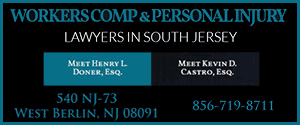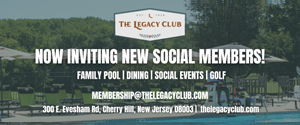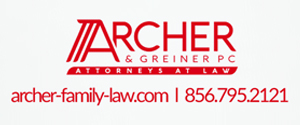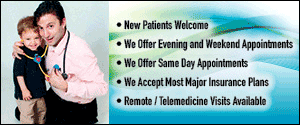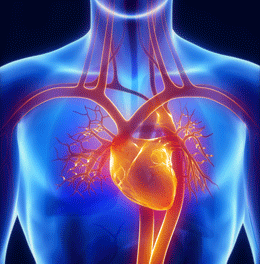
South Jersey doctors debunk the myths associated with heart attacks and strokes.
There are a number of common misconceptions about strokes and heart attacks that have been confusing people for years. Unfortunately, it is this kind of misinformation that can give patients a false sense of security. In order to set the record straight, we spoke to some of the area’s leading experts. They helped us debunk some of these common myths. The more you know, the better chance you have at preventing both.
MYTH: Heart attacks are a “man’s problem.”
While many people still assume that heart disease is more of a problem for men, the truth is that it strikes more women. “I think at least part of this common misconception can be attributed to the media’s emphasis on other diseases affecting women—particularly breast cancer,” says Vincent Spagnuolo Jr., MD, of Virtua—The Cardiology Group. “Women should definitely be aware of their breast cancer risk but shouldn’t ignore the fact that heart disease is actually the leading cause of death among women.”
In fact, according to the American Heart Association, while one out of 31 American women dies from breast cancer each year, heart disease claims the lives of one in three—roughly one death each minute. “This is a big topic for women and something they should be on top of,” says Susan E. Lynn, PT, MS, director of rehabilitation for Marlton Rehabilitation Hospital. “The false assumption that heart attacks are more likely to happen to men sometimes leaves women caught off guard.”
MYTH: I’m not having a heart attack because I don’t have chest pain.
While a lot of heart attacks do present with chest pain, many do not. “The presentation of a heart attack can be different for everyone,” says Michael J. Horowitz, D.O., of South Jersey Heart Group/Lourdes Cardiology Services. “Not everyone reads like a textbook or comes in with those classic signs. They may have upper extremity numbness, shortness of breath, or even just neck and jaw pain.”
So when exactly do you know you need help? “Any new, abnormal symptom such as sudden onset of shortness of breath, chest pain, jaw or neck pain, or pain radiating into the shoulders and upper extremities, deserves a prompt call to your primary care physician,” Horowitz says.
MYTH: Heart attacks are for the elderly.
While it’s true that older adults are more likely to have a heart attack than a younger patient, it’s not a disease that’s limited to the elderly. Horowitz says there has been a trend toward heart disease in younger patients—particularly because of the obesity epidemic.
Lynn agrees. “It does depend on God-given health, too, and it’s important that people are aware of their family history and their risk,” she says.
Of course, older individuals do need to be aware of their risks, as well. Lynn says at this time of year—particularly with all the snow our region has gotten—snow shoveling is an activity that needs to be performed with caution. “Weekend warriors often think they can shovel like they did as a teen, but it’s a very strenuous activity,” she warns. “Your body is working to stay warm while also working hard. Do it in small portions and take time to rest in between.”
MYTH: If I take a cholesterol lowering drug, I can eat anything.
“Unfortunately in America, we tend to like quick fixes,” says Perry J. Weinstock, MD, FACC, chief of cardiology at Cooper University Hospital and the director of the Cooper Heart Institute. “Taking a pill is easier than changing your diet, but the truth is that they work hand in hand. Some people have a genetic lipid abnormality and they need to both watch their diet and take medication. But others don’t have the lipid abnormality—only the poor diet—and if they’re taking medication, they’re using a chemical to circumvent what they could have done naturally.”
Spagnuolo agrees. “The importance of diet and exercise are often underestimated when it comes to heart disease prevention,” he says. “A lot of people focus on the medicine, but studies have shown that diet and exercise can be as effective as medication. For those that need the medicine, it’s a combination effect—the diet and the medication are both important and they work together. It’s not one or the other.”
Lynn says the bombardment of cholesterol medication ads on TV may have led some to put so much “value” on their meds. “That’s not where they should put their value,” she says. “They should be focusing on staying active—regardless of whether they take medication. I once attended a lecture where it was said that if we could package up the benefits of exercise and put it into a pill, that it would be the most prescribed pill ever. That’s something to think about.”
MYTH: Medication is bad.
On the flipside, there are people who believe that medication is bad and will do whatever it takes to avoid it. But Spagnuolo says some people may really need it. “While medication is not a substitute for a healthy diet, it’s important to know that for some people, it’s an incredibly important part of treatment,” he says. “Your doctor will always weigh the risks and benefits and in many cases the benefits of medicine will outweigh the risk for a patient.”
Weinstock says he’s also had patients express concerns with medication. “Some patients will willingly take over-the-counter medications or vitamins and avoid prescription drugs because they think they’re bad or dangerous,” he says. “That’s an area where patients need to be very careful. There’s not much data out there about supplements and the over-the-counter claims made on various products. It’s important that patients discuss anything they plan to take with their physician.”
MYTH: I don’t have time to get to the gym, so I can’t work out.
The American Heart Association recommends 30 minutes of any aerobic type of activity five days a week. But Weinstock says there’s nothing that says it has to be done in the gym. “Anything you can do to get your body moving counts,” he says. “Park far away from work, use the stairs instead of the elevator, and move your legs up and down while you’re sitting at your desk. Stagnation is bad. But exercise is not something that has to take place in a gym. You can find ways to exercise all day both at work and at home. Simple things you do can add up over time.”
Spagnuolo says it’s also important to fit in some resistance training at least one to two days a week. “A lot of people assume that has to mean weight lifting, but that’s not true,” he says. “For example, try yoga. Studies have shown that yoga can be effective in lowering blood pressure.”
MYTH: I can’t do anything to prevent a stroke.
There’s actually a lot you can do to prevent a stroke, says Spagnuolo. “All of the healthy lifestyle changes you can make to help prevent a heart attack will also help with your prevention of stroke,” he says. “These include a heart-healthy diet, exercise, managing diabetes, managing your blood pressure, and quitting smoking.”
People should also be aware of the signs of a stroke since time is so critical in the event of one. Lynn says the signs and symptoms include slurred speech, facial droop, and weakness in arms and legs. “The faster you get help, the better your chance of a good outcome,” Lynn says.
MYTH: A stroke will end my life.
While strokes can be devastating, the truth is that they are not only survivable, but the advancements made in stroke recovery have meant that many patients are able to go on with their lives. “In physical therapy, we used to teach people how to relive without that functioning arm or leg they lost use of,” says Lynn. “We taught them how to adapt. But now we work on getting function back. There have been so many advances in this area. We have speech apps on the iPad that can assist with speech and even technology that can help patients regain swallowing ability. I run the stroke support group and can attest to how far we’ve come.”
Published (and copyrighted) in South Jersey Magazine, Volume 10, Issue 11 February, 2014).
For more info on South Jersey Magazine, click here.
To subscribe to South Jersey Magazine, click here.
To advertise in South Jersey Magazine, click here.



